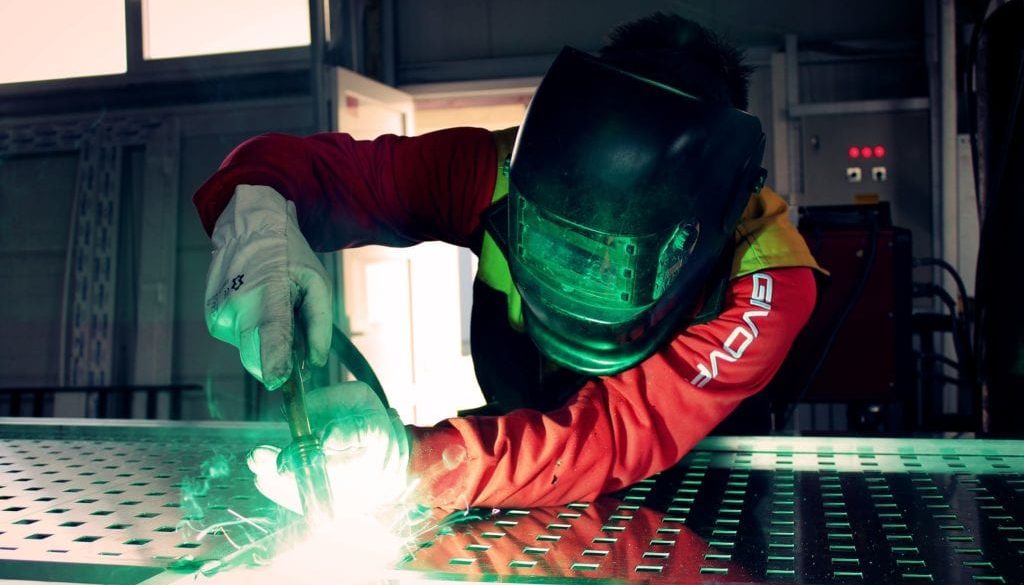Mise en œuvre de plans d’intervention d’urgence dans les installations de fabrication
It’s important for businesses to create and have comprehensive emergency response plans in place in the case of a workplace emergency. It’s especially important that workplaces with hazardous materials, heavy machinery, and increased risks for injury on the job to have a comprehensive emergency response plan. Those working in the manufacturing industry are often exposed to workplace hazards that could cause extreme injury or even death, which is why being prepared for emergencies within the workplace is paramount.
In 2018 there were 342 fatal injuries and 395,300 non-fatal injuries in the manufacturing industry, according to the Bureau of Labor Statistics. These numbers prove safety should be on the forefront of employee’s minds and that an emergency response plan must be in place to keep a manufacturing facility running.
How to Implement an Emergency Response Plan in Manufacturing
Risk Assessment
Before creating an emergency response plan, there should be a full risk assessment conducted on-site. There are three stages of risk assessment Ready.gov and the Receptionist has listed as follows:
- Hazard identification:
Consider which types of hazards could affect your company, from natural disasters to human-caused dangers. - Vulnerability assessment:
In this stage, consider which assets are at risk from each potential hazard. The most important “asset” is always your employees, but you’ll also have to worry about things like supply chain interruptions and even your company’s long-term reputation. - Impact analysis:
This is where you get clear about the actual, measurable damage that could be done by the disaster.
Once you have identified the risks within your facility and have determined what the strengths and weaknesses are, you can begin creating your emergency response plan.
Create Emergency Response Plan
Once your facility has determined the problem areas or hazards, as well as strengths, you can start to create an emergency response plan around facing any hazards for the company.
Below are some emergency options to keeping your employees safe from The Receptionist:
- Evacuation:
All building occupants must be relocated in the case of emergencies such as fires, hazardous chemical spills, gas leaks, and bomb threats. Evacuation plans require safe, clearly marked routes to exits and clearly designated meeting spaces. - Shelter or Shelter-In-Place:
The safest option in the face of many outside threats, such as a tornado or an external chemical spill, is to take shelter within the appropriate space inside the workplace. Employees need to know exactly how to get to the designated safe spaces for each emergency scenario. - Lockdown: In the case of an on-site threat of violence or a threat of violence in the vicinity, the best course of action is to lock employees inside, instruct them to barricade the entrances, and shut down outside access to the building.
Employees should understand the differences between these emergency options, and in what situations they’ll be implemented during an emergency.
It would also be helpful to encourage employees to take on certain rolls, including who should be authorized to order an evacuation or shutdown and which employees are responsible for moving building occupants to safe spaces. Making workplace safety a team effort should be both rewarding as well as informational. Your employees should be prepared for any and every safety threat within the manufacturing plant.
Efficient Communication Strategy
Communication during an emergency is essential. Employees and building visitors must be informed of any emergencies from an impending weather event such as a tornado, to a hazardous chemical spill on a certain floor, to an active assailant situation in the building.
A communication strategy should be a top priority during the creation of an emergency response plan, as employees and workers will rely on the manufacturing facility to have highly efficient communication throughout the event of a crisis.
Educate and Train Employees
An emergency response plan will only be effective if it is tested, tweaked, and taught to employees. Your manufacturing facility should conduct intensive safety training sessions so that they understand how to act in the case of an emergency, and should also make sure the emergency response plan is readily accessible.
Practice makes perfect, and in an emergency situation the way it is handled should be as close to perfect as your company can get. You should run frequent drills for several emergency situations and work through any issues that may arise, which will streamline emergency response.
Technology Solutions to Help
Manufacturing businesses are turning to safety technology solutions, such as mass notification technology and mobile panic button applications, to help streamline communications between users, workers, and visitors.
Mass notifications are essential in an emergency situation, as employees and visitors should always be informed if there is something going on. With a simple text message to a short code, visitors can instantly be signed up to the manufacturing facilities emergency notification platform to receive updates in the case of an emergency for an allotted amount of time.
By using a mobile panic button application, users can call 9-1-1 with just the tap of a button informing workers, 9-1-1, and first responders of an emergency simultaneously. Call dispatchers will also have all facility plans through the technology allowing them to direct first responders more effectively.





